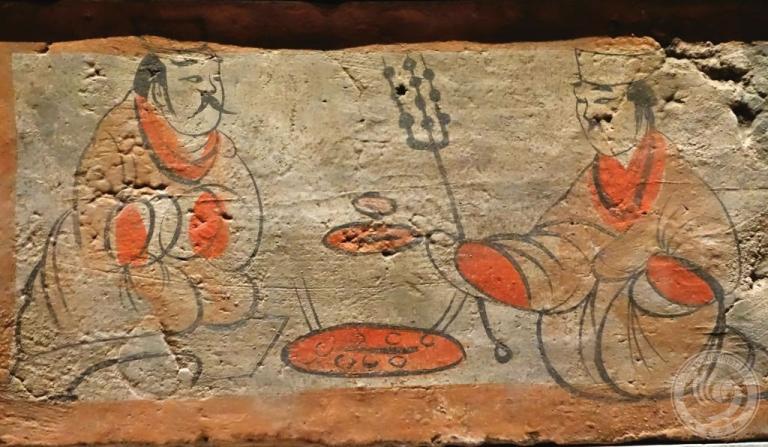Important Artists and Painting Works
3 min readThe fashion of literati doing painting started from late Han dynasty, examples were Zhang Heng, Cai Yong, Liu Bao, etc. And in the Three Kingdoms, Wei and Jin dynasties more and more literati showed interests in painting.A number of painters appeared among them and brought forward their own painting theories. Representatives included Cao Buxing, Wei Xie, Gu Kaizhi, Lu Tanwei, Zhang Sengyao, Xie He, Xiao Yi, etc.
Gu Kaizhi(348-409),a painter in Eastern Jin dynasty, with courtesy name Chang Kang, was born in Wuxi, Jinling (Jiangsu province today). He was versatile and accomplished in poetry, ode, essay writing, especially in painting. He was known for his miraculous obsession, talent and painting. In figure painting, he attachedgreat importance to its lifelikeness, especially the painting of eyes and detail features. He pointed out that in painting one should make full use of one’s imagination and choose the most expressive feature to depict images, which was of profound influence in painting history. The sketch lines he used were stretching with strength, and as natural as silkworm spinning, spring breeze in the air and water flowing on the ground. His works like Admonitions of the Instructress to the Palace Ladies, Nymph of the Luo River, Wise and Benevolent Women were left till today.A1l were imitation produced by people from Song dynasty.

Lu Tanwei,a painter in Song, Qi in Southern dynasties, was born in Wu(Suzhou City in present Jiangsu province). He learned from Gu Kaizhi and was good at figurpainting, pictures of fowls and animals and paintings related to Buddhism. Inspired by the one stroke calligraphy created by calligrapher Zhang Zhiyi in Eastern Han dynasty, he created the unicursal. His paintings were featured by vigorous and fine sketch lines without stop, figures with comely features and vivid facial expressions, which were influenced by foreign figure paintings. His style was known as with “refined figure bones and clear figure images”.
Zhang Sengyao,a painter in the Liang period of Southern dynasties, was born in Wuzhong(Suzhou, Jiangsu province), or Wuxing (Huzhou, Zhejiang province). He was good at Buddhism-related painting as well as figure paintings, portrait, flower-and-bird, animals and landscape paintings. He created large amount of murals in temples in southern China, and was later asked to do portrait for envoys from different foreign countries as ordered. When he was painting, only with several strokes, one could recognize the person being portrayed. His such style was known as Shu Ti, or sparse arrangement style. He also created “Zhang style”Buddhist painting. Zhang Sengyao was also good at learning from foreign painting skills. He used the sunkenand protruding painting skill from India to create murals in the City of Jiankang (Nanjing today). The images on the mural were flat when seen closely, yet with a third dimension when seen from far distance. Hence the temple with that mural was known as the Sunken and Protruding Temple. There was a very popular story of his making painted dragon fly by finishing painting its eyes.









